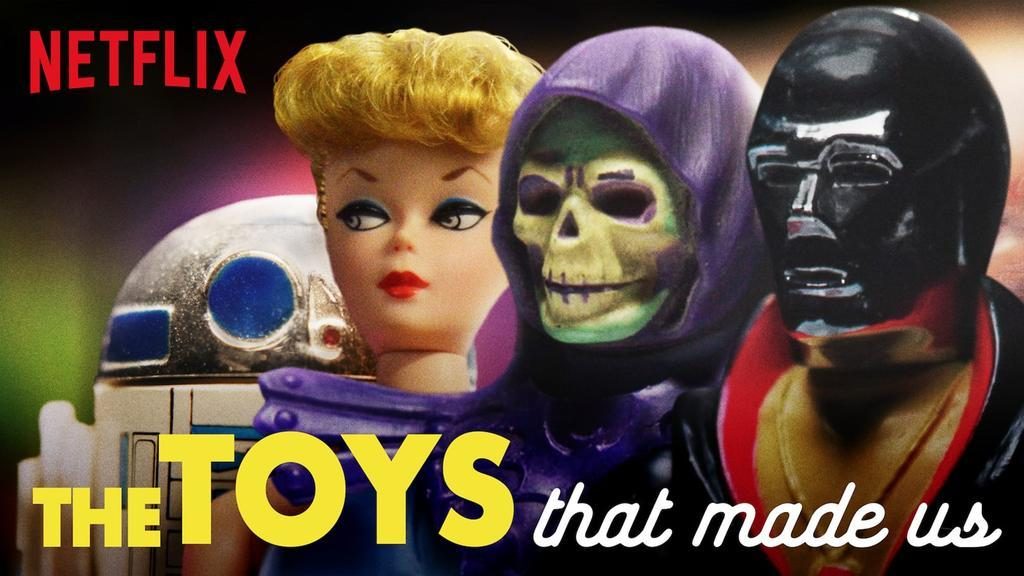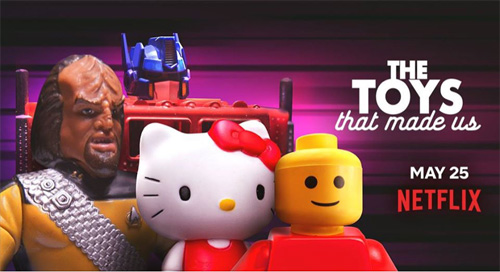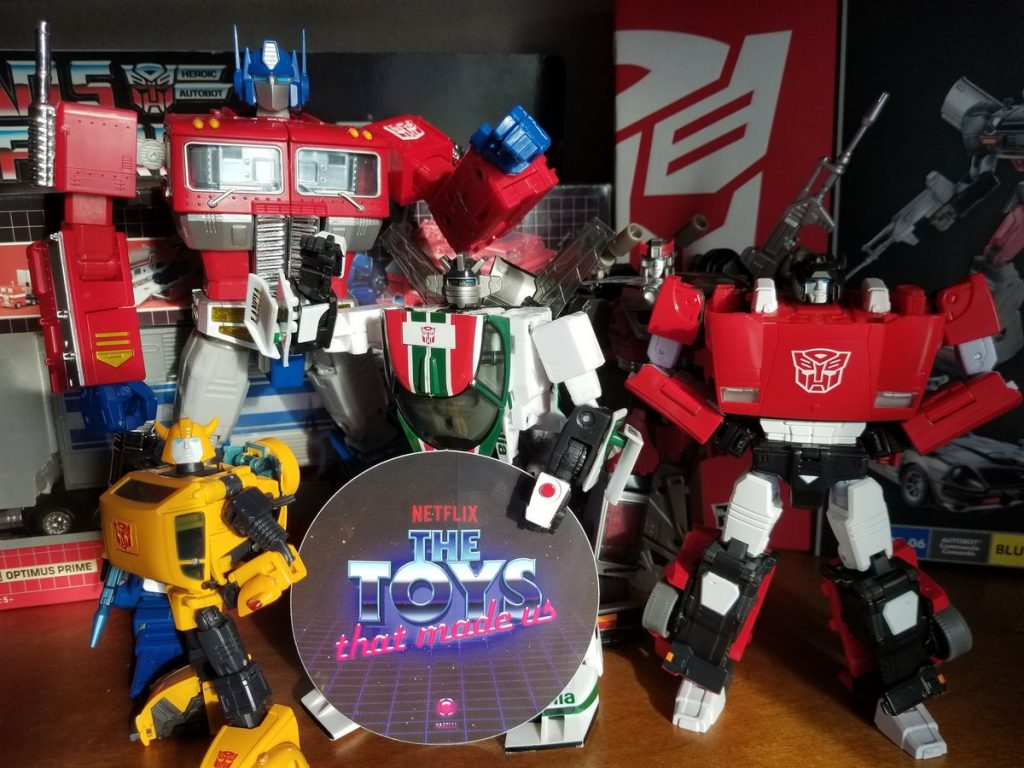While children the world over have been impacted by the various toy lines that have woven in and out of our consciousness in the last century, the sometimes-tumultuous history of the rise and fall—and occasionally rise again—of those toy lines is just as grand and operatic as Autobots and Decepticons doing battle or He-Man protecting Castle Greyskull.
That history intrigued Brian Volk-Weiss, so much so that he set to create a documentary series about the successes and failures of several toy lines that have ingrained themselves in pop culture. With the Netflix series The Toys That Made Us, Volk-Weiss explored how and why so many beloved toy lines soared like the Millennium Falcon, while others crashed like the Transformers’ ship into a volcano.
With new episodes of the series recently premiering on Netflix, we spoke with Mr. Volk-Weiss about the conceit of The Toys That Made Us, the parameters he set for himself when focusing on various toy lines, and what he learned about the precarious nature of a toy line’s success.
FreakSugar: As a child of the 1980s, I have giddily loved this series. What can you tell us about the genesis behind The Toys That Made Us?
Brian Volk-Weiss: The genesis is pretty simple. When I was a little boy, three- to four-years-old, I played with toys. As I got older, I stopped playing with toys, but I still bought them. As I got older still, I started buying enough toys that could be considered a collection. I had a pretty big collection of toys. That’s first thing.
Secondly, I’m a huge history buff. I’m incredibly into history. One of the things I noticed is that it’s really difficult to get information about most toys and their histories. The toys with the most readily available info are really Star Wars and Barbie, and even those toys that have a whole lot of info about them out there for the public.
But then, there’s He-Man and Transformers and Lego and all these other toys where there’s nothing, no information at all. It’s almost impossible to find anything out about them. I wanted to rectify that. I took my love of toys and my love of history and combined them.
My company does a lot of business with Netflix in the standup comedy space so I know a lot of the people over there and I kept bugging them about this show. One day, they said to me, “Well, if we were to do a show like this, this is how we think it should be.” So I took their notes and on our own dime, we shot a five-minute take of how we think the show could work. By the grace of God, they loved our take and green-lit the show.
FS: You mentioned that you couldn’t get certain information about several toy lines. Is that part of the reasoning behind which toys on which you threw the spotlight?
BVW: There were basically three quasi “rules” that we ran everything through:
First, the toy had to be in production nonstop since it debuted. We didn’t want to do anything that was huge in the 1980s and didn’t exist in the 1990s or something that started in 2005. So we really wanted something that was 30 or 40 years old.
Second, I had this vision of the Mt. Rushmore of toys. So when we looked at the toy lines, we asked if any of the lead characters could have a space in that monument.
Third, we wanted every toy to have a rabid fan base; meaning that there are conventions and fans dress up as their favorite toys and what-not. Those guidelines were really the logic behind picking the toys that we did. Some toys hit all three, some hit two, but those were the three filters through which we ran every decision.
FS: You mentioned that you are a huge history buff. Did you learn anything in your research about the various toy lines that particularly surprised you?
BVW: Oh yeah, with every toy and every interview. We did over 300 of them I heard stuff or saw stuff with every one that blew my mind. It’s really hard to just pick one, but here’s an example:
When I was a kid, I was a huge G.I. Joe and Transformers fan. The three toys were star wars, Before we were making show, I had no idea that Hasbro [the makers of Transformers and G.I. Joe toys] would hire Marvel Comics to come up with the names and stories and everything for the characters and their world. So all the character names, the Transformers’ home planet Cybertron, the Transformers coming to earth in the spaceship and crashing under the volcano: that was all Marvel. That wasn’t Hasbro.
One of my favorite things I learned from making the show had to do with the G.I. Joe roster. Hasbro would send the G.I. Joe figures to Marvel, and then Marvel used the figures, creates comic and story.
When Marvel got that first initial box of figures, the called Hasbro to let them know that they hadn’t sent Marvel the bad guys, just the good guys. Hasbro was like “What do you mean bad guys?” Hasbro told Marvel there were no bad guys
Marvel asked, “What do you mean? Who is G.I. Joe supposed to fight?” There was long pause on the other end of the line and then Hasbro replied, “We figured they’d fight Star Wars figures or Barbie dolls or something.”
Marvel explained that they can’t write the G.I. Joe comics without bad guys. Further, Marvel questioned how Hasbro was going to sell toys without bad guys. Finally, Hasbro was like okay, but that Marvel had to figure out the bad guys and tell Hasbro.
A Marvel writer said, “How about Cobra?” to which another writer asked, “Who the Hell is Cobra?” The first writer replied, “I don’t know, but it sounds cool.”
FS: You said that you did over 300 interviews. Did you talk to folks beyond the toys’ creators?
BVW: Many collectors and creators worked on the show with us. Every episode had at least one expert—and sometimes up to six of them—who helped create show.
But the show is not about the collectors; it’s about the toys. And we only interviewed celebrities as they related to the toy. We interviewed Dolph Lundgren because he starred as He-Man in the Masters of the Universe movie. We interview Michael Bay because of his involvement with the live-action Transformers movies. Paris Hilton is a huge Hello Kitty fan, so we interviewed her.
That’s the beauty of Netflix. Unlike other networks, it’s not star-driven. I tried to sell the show to five or six networks before Netflix bought it. Every network said something like we needed Matt Damon because he’s a big Lego fan, stuff like that. Thank God they passed because Netflix allowed us to make the show exactly how we wanted.
FS: After doing the series, can you pinpoint how the process has enriched your love for toy collecting?
BVW: For one thing, I am spending more fucking money now on toys than last five years combined. [laughs] I never collected He-Man toys and now I’m collecting them. I never had any Barbie dolls, and now I have two. I’m spending more money on other toys as well.
At looking at eight toy lines simultaneously over the years while making the show, my main takeaway from the stories I’ve heard is to appreciate how delicate a toys’ success actually was. Because for every Transformers, there’s a Gobots. For every He-Man, there’s a Silverhawks.
As much as I know about Star Wars, there’s a good chance that Kenner [which produced the first Star Wars toys] could have gone bankrupt had the film not been the biggest hit of the year. Kenner took a big chance. Star Wars had to be biggest success in history, not just for Kenner to do great, but to survive as a company.
Ruth Handler—the CEO of Mattel—literally bet the company on Barbie. And Barbie came out of gate and failed for years. Ruth Handler stuck with Barbie as the toy failed for years and willed Barbie into success.
He-Man made $900 million its first year and $8 million the second. It fell off a cliff.
Hello Kitty was saved because McDonald’s needed toys to put in their Happy Meals.
That’s the main thing I learned. All success is so random and delicate.
The Toys That Made Us is streaming now on Netflix.



